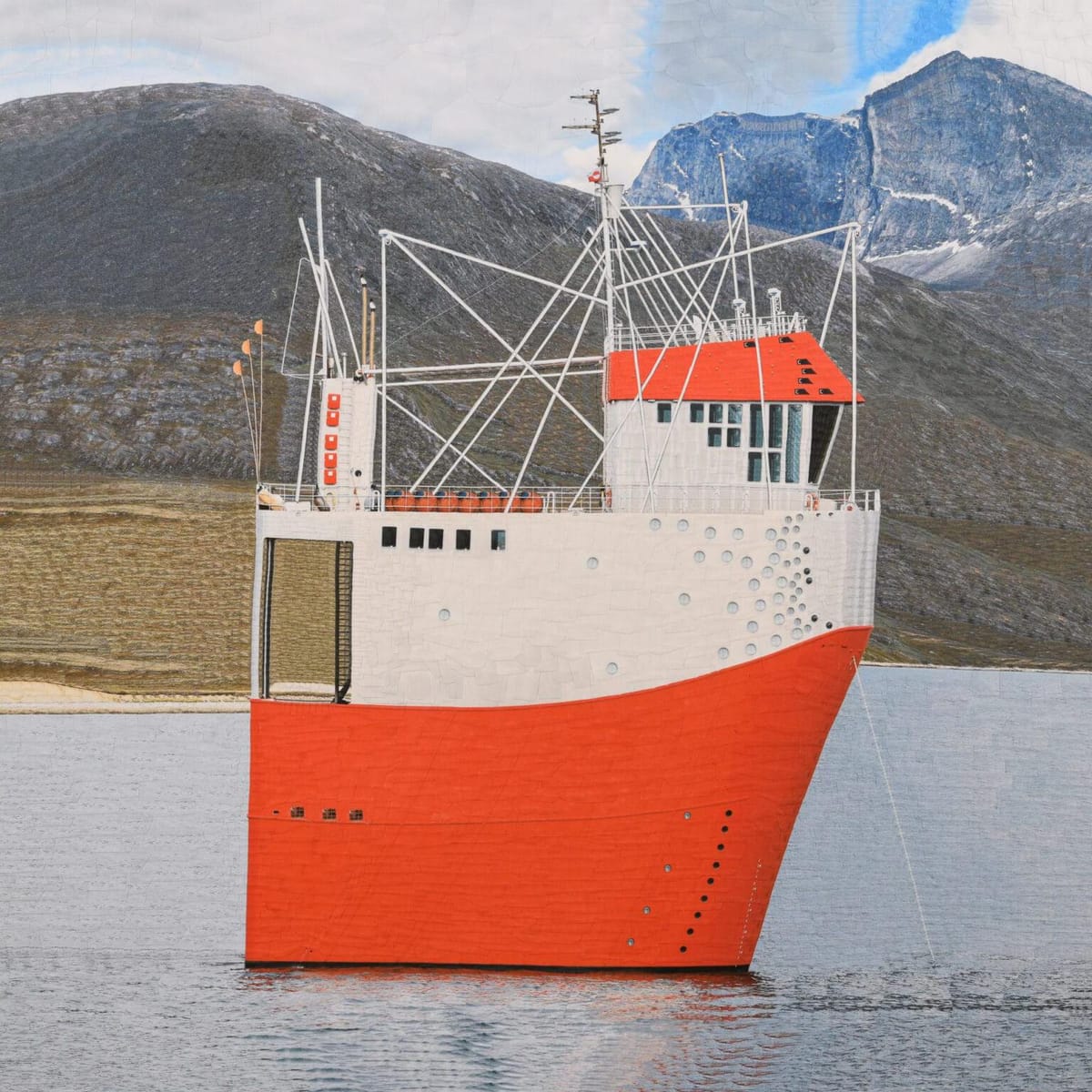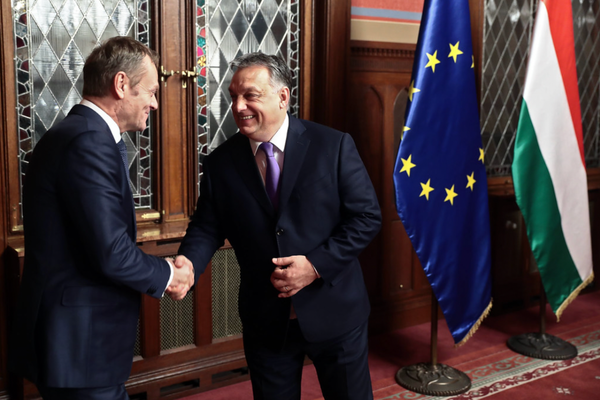Evolving U.S. Policy Toward Arctic Development: Icebreakers, Climate, and Oil

By Max Rosenblum, University of Chicago
One early goal of the second Donald Trump administration has been expanding and showcasing American power around the globe. This can be seen with comments about the idea of Canada being annexed as a state, Greenland being threatened with military force, the acquisition of Gaza, and increased control over the Panama Canal.1 These campaigns have not been advanced in legislation and are likely not all meant to be actual policy proposals; rather, they are demonstrations of President Trump’s intention to flex American foreign power – even if (perhaps especially because) it is performative. These causes have been ridiculed for their quixotic nature, but the administration insists on the seriousness of these comments.2
Another imperialistic campaign advanced by President Trump is the purchase of Finnish icebreakers, for immediate deployment in the Arctic to bolster shipping lanes and extract valuable resources such as rare earth elements and oil.3 As the name reflects, these are ships designed to break ice with a powerful engine and strengthened hulls. These upgrades make such boats an expensive and necessary part of Arctic expeditions.
This desired purchase raises two questions. Why does the U.S. need more icebreakers in general?4 Why is this an urgent enough issue for President Trump to disregard the manufacturing he has been pushing to bring back to the United States (including shipbuilding), instead opting to introduce a massive trade deficit with Finland?
In regard to the first question, Secretary of State Marco Rubio offers clarifying comments about why the United States has to engage in the Arctic for the sake of the “national interest.”5 Rubio stated that as the Arctic continues to melt, the region will become increasingly “critical for shipping lanes” and implied that without U.S. intervention in the region, China and Russia could become the dominant powers in the region.6 Controlling Arctic shipping lanes would affect the way international trade is conducted, as it could dramatically reduce the shipping time from Europe to Asia. Considering that Russia has a considerable fleet of 61 icebreakers – compared with the US fleet of 8 – Rubio has a point.7 Should China or Russia choose to construct Arctic highways for commercial purposes with their sizeable fleet of high-powered icebreakers, they are set up better than the United States with its small fleet.8 The small fleet of icebreakers that the United States has is why President Trump is pushing for more, answering my first question from above. The United States would be outcompeted with its current (as well as President Trump’s proposed future) arsenal.
Further, the reason for this shipbuilding project being located externally is a byproduct of the sense of urgency expressed by the administration. When constructed within the United States, the process is expensive and slow. In 2019, the U.S. provided contracts for the construction of icebreakers through the Polar Security Cutter program to U.S.-based VT Halter Marine at a cost of $1.7 billion each.9 This contract from 2019 has been plagued by delays and cost overruns, to the point that as of 2024, “full construction of the lead ship has not begun”.10 In contrast, purchasing from Finland, who design more than 80% of all icebreakers, only takes 24 months from the contract being signed to completion of the ship.11 Also, Finland can make the ship at an estimated one-fifth of the cost of American shipbuilding.12
Despite being cheaper than domestic production, the cost of imported Finnish icebreakers is high enough to significantly spike the US trade deficit. In February of 2025, there was a trade deficit of $331 million, which would jump to at least $700 million if just one ship were purchased.13 This emphasizes the importance of rapid delivery to the Trump administration, as decreasing trade deficits has been a major goal of President Trump’s platform – perhaps second only to decreasing the number of illegal immigrants in the United States. If the tariff formula and assumptions established by the Trump administration are applied (elasticity on tariffed imports are set to 0.25 and passthrough is set to 4, for a total 𝛆 · 𝜑 = 1, which makes the overall tariff equation simply dividing the trade balance by the value of imports), the increase to the tariff rate would be approximately 30%, making the overall tariff rate jump to 57%.14 This exercise demonstrates the sheer scale of the proposed purchases, and how much impact they would have should President Trump commit to his economic and imperial goals.
The size of the United States’ icebreaker fleet is no new issue. Ten years ago, in 2015, President Barack Obama advanced bipartisan legislation with Alaska’s Republican senators to accelerate the production of heavy-class icebreakers and the monitoring capacities of the United States in the Arctic region.15 This common priority from Presidents Obama and Trump highlights key similarities and differences in the way they have tried to actualize change, and how the United States' interactions with the global political landscape have shifted in the past ten years.
The motivation behind President Obama’s push for increased Arctic power, as described by his press secretary, was to “maintain the open seas necessary for global commerce and scientific research, allow for search and rescue activities, and provide for regional peace and stability”.16 The primary condition that prompted this push was the thinning ice in the Arctic regions, which makes icebreakers more efficacious. Further, the estimation that nearly 25% of the world’s reserve of oil and natural gas is under the Arctic was necessary for President Obama to economically justify the investment in these ships.17 Fundamentally, Presidents Obama and Trump’s interest in the Arctic relies on the same conditions.
Similar to President Trump, this issue was presented as though it was urgent and pressing for President Obama; however, the rhetoric used by his administration to emphasize this urgency differed. Instead of being focused on competition with foreign powers, Obama’s campaign for more icebreakers focused on the advantages of these ships for stewardship over the region, protecting at-risk ecosystems, and helping support scientific research in the Arctic.
This distinction in rhetoric reflects how the United States has shifted its presentation of policy decisions to the world. The primary goal of the icebreaker project is undoubtedly very similar for both presidents: to control the Arctic for the extraction of oil and gas as well as the development of shipping lanes, but the way that this goal is broadcast to the world and internally is starkly different.
Prior to examining the rhetoric used, I want to establish what has happened since President Obama advocated for more icebreakers in order to serve as a steward of the Arctic’s ecosystems. Climate change and carbon emissions have increased year upon year, accelerating the melting of glacial ice in the Arctic.18 The icebreakers President Obama advocated for, which are the same class and purpose as the icebreakers President Trump is advocating for, were not constructed nor funded during his time in office, with advancement on the icebreaker project ending up contracted out by the Coast Guard during President Trump’s first term in 2019.19 Despite the contract, the Polar Security Cutter project has still been held up by delays, with none of the ships constructed as of 2024.20
One explanation for the lack of results from Obama came from the somewhat veiled hypocrisy involved in advocating for icebreakers to help support Arctic ecosystems and science, when the initial backers, the Alaskan Republican senators, were advancing the project in relation to the substantial amount of funding they received from oil and gas lobbyists.20 Instead of advocating through the language of international competition, Obama focused on the intellectual superiority of the United States. President Obama advocated for the ships, in part, “to increase our understanding of this vital region.”21 This comment purposefully disregards some of the main hopes for the project, namely the financial aspects, and overplays the pursuit of scientific knowledge in the region.
In contrast, Trump says exactly what his goal for the project is: making money. In a statement by the Trump administration on the very day he was sworn in to his second term, the administration rescinded, repealed, denied, and canceled wildlife protections, statements on environmental impacts, and appeals for protecting indigenous sacred sites, all for the sake of using “Alaska’s vast lands and resources for the benefit of the Nation”.22 To this end, the administration’s goal is to “efficiently and effectively maximize the development and production of the natural resources,” which translates to President Trump wants to extract more natural resources and sell them.23
Environmentalists be damned, Trump wants to encourage trade and drill for more oil, and of course, climate change is still a “hoax” despite the fact that icebreakers have only been made more viable recently with diminishing ice layers.23 Coupling this profit incentive with the idea that if the United States doesn’t take the pie (the Arctic), a competitor will swoop in, and then the United States will be that much poorer, has been very convincing in getting support amongst his base in the government, which can be seen in spending bill proposals that include icebreakers. Recently, May 2025 legislation proposals include 9 billion dollars for the Coast Guard to pursue the construction and purchase of more icebreakers, reflecting the success that Trump has achieved.24
I hesitate to make any normative judgments about what it means for President Trump to be successful in his goal of controlling the Arctic’s resources by advocating a position of conflict with other countries, instead of the advancement of the United States, akin to what President Obama did. All I can definitively say is that with similar situations, goals, and different pitches, Trump has been more effective than Obama at creating a sense of urgency around acquiring a strong icebreaker fleet. Further, President Trump’s interest in purchasing these ships despite the fact that it takes away money from domestic ship-building and increases trade deficits emphasizes how important this is to the administration.
Notes
- Olivier Knox, “Yes, Trump Still Wants Canada, Greenland and the Panama Canal,” US News, March 14, 2025, https://www.usnews.com/news/u-s-news-decision-points/articles/2025-03-14/trump-still-wants-canada-greenland-and-the-panama-canal.
- Ibid.
- Andrea Shalal and Anne Kauranen, “Finnish President Boosts Ties with Trump in Surprise Florida Visit,” Reuters, March 31, 2025, https://www.reuters.com/world/trump-meets-finland-president-discusses-buying-icebreakers-2025-03-29/; Arctic Portal, 2025, https://arcticportal.org/the-arctic-portlet/hot-topics/natural-resources.
- The White House, “Restoring America’s Maritime Dominance,” April 9, 2025, https://www.whitehouse.gov/presidential-actions/2025/04/restoring-americas-maritime-dominance/.
- Amanda Friedman, “‘This Is Not a Joke’: Rubio Says Trump Is Serious about Buying Greenland,” Politico, January 30, 2025, https://www.politico.com/news/2025/01/30/marco-rubio-buy-greenland-009030.
- Ibid.
- Coast Guard Office of Waterways and Ocean Policy, “Major Icebreakers of the World,” accessed May 1, 2025, https://www.dco.uscg.mil/Portals/9/DCO%20Documents/Office%20of%20Waterways%20and%20Ocean%20Policy/20170501%20major%20icebreaker%20chart.pdf?ver=2017-06-08-091723-907.
- Ibid.
- Congressional Budget Office, “The Cost of the Coast Guard’s Polar Security Cutter,” August 21, 2024, https://www.cbo.gov/publication/60170.
- Ibid.
- Jason C. Moyer and Rickard Lindholm, “Icebreaking Explained – Finland: Europe’s Icebreaker Superpower,” Wilson Center, November 12, 2024, https://www.wilsoncenter.org/article/icebreaking-explained-finland-europes-icebreaker-superpower.
- Ibid.
- Observatory of Economic Complexity, “United States and Finland,” accessed May 1, 2025, https://oec.world/en/profile/bilateral-country/usa/partner/fin.
- Ben Chu & Tom Edgington, “How Were Donald Trump's Tariffs Calculated?” BBC, April 3, 2025, https://www.bbc.com/news/articles/c93gq72n7y1o.
- Sabrina Siddiqui, “Obama Seeks to Close Icebreaker Gap as Arctic Sea Traffic Competition Intensifies,” The Guardian, September 1, 2015, https://www.theguardian.com/us-news/2015/sep/01/us-icebreakers-arctic-sea-traffic.
- Office of the Press Secretary, “FACT SHEET: President Obama Announces New Investments to Enhance Safety and Security in the Changing Arctic,” September 1, 2015, https://obamawhitehouse.archives.gov/the-press-office/2015/09/01/fact-sheet-president-obama-announces-new-investments-enhance-safety-and.
- Arctic Portal, “Natural Resources,” accessed May 1, 2025, https://arcticportal.org/the-arctic-portlet/hot-topics/natural-resources.
- Ian Tiseo, “Annual Carbon Dioxide (CO₂) Emissions Worldwide from 1940 to 2024,” Statista, January 15, 2025, https://www.statista.com/statistics/276629/global-co2-emissions/.
- Congressional Budget Office, “The Cost of the Coast Guard’s Polar Security Cutter.”
- Ibid.
- Open Secrets, “Industry Profile: Oil & Gas,” accessed May 1, 2025, https://www.opensecrets.org/federal-lobbying/industries/summary?cycle=2024&filter=s&id=E01.
- Erin McClam, “Obama to Call for More U.S. Coast Guard Icebreakers in Changing Arctic,” NBC News, September 1, 2015, https://www.nbcnews.com/news/us-news/obama-alaska-calls-more-u-s-icebreakers-changing-arctic-n419336.
- Ibid.
- The White House, “Unleashing Alaska’s Extraordinary Resource Potential,” January 20, 2025, https://www.whitehouse.gov/presidential-actions/2025/01/unleashing-alaskas-extraordinary-resource-potential/. ; Melina Walling, “What to Know about Trump’s First Executive Actions on Climate and Environment,” AP News, January 27, 2025, https://apnews.com/article/trump-executive-orders-climate-change-environmental-policy-e4fb2b2495c0bcf880fab46605936b09.
- Lee Ferran, “GOP Reconciliation Bill Includes Over $9 billion for New Icebreaker Ships,” Breaking Defense, May 1, 2025, https://breakingdefense.com/2025/05/gop-reconciliation-bill-includes-over-9b-for-new-icebreaker-ships/.





